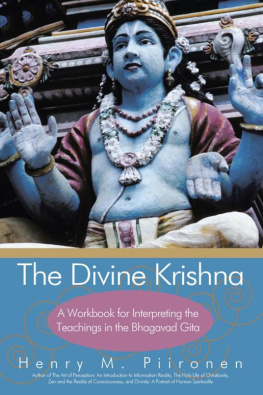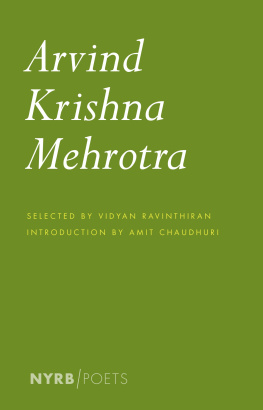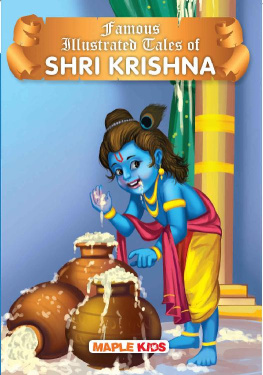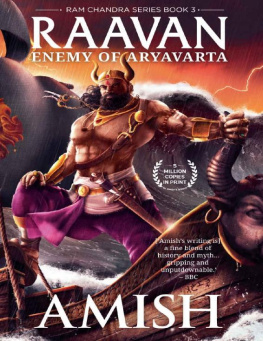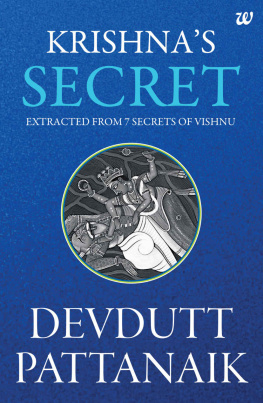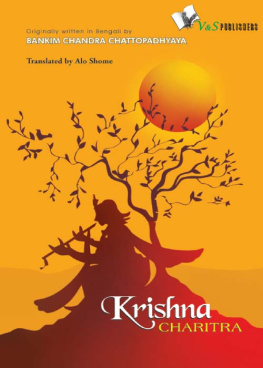Krishna Udayasankar - The Aryavarta Chronicles Book 2: Kaurava
Here you can read online Krishna Udayasankar - The Aryavarta Chronicles Book 2: Kaurava full text of the book (entire story) in english for free. Download pdf and epub, get meaning, cover and reviews about this ebook. year: 2013, publisher: Hachette India, genre: Detective and thriller. Description of the work, (preface) as well as reviews are available. Best literature library LitArk.com created for fans of good reading and offers a wide selection of genres:
Romance novel
Science fiction
Adventure
Detective
Science
History
Home and family
Prose
Art
Politics
Computer
Non-fiction
Religion
Business
Children
Humor
Choose a favorite category and find really read worthwhile books. Enjoy immersion in the world of imagination, feel the emotions of the characters or learn something new for yourself, make an fascinating discovery.
- Book:The Aryavarta Chronicles Book 2: Kaurava
- Author:
- Publisher:Hachette India
- Genre:
- Year:2013
- Rating:3 / 5
- Favourites:Add to favourites
- Your mark:
- 60
- 1
- 2
- 3
- 4
- 5
The Aryavarta Chronicles Book 2: Kaurava: summary, description and annotation
We offer to read an annotation, description, summary or preface (depends on what the author of the book "The Aryavarta Chronicles Book 2: Kaurava" wrote himself). If you haven't found the necessary information about the book — write in the comments, we will try to find it.
The Aryavarta Chronicles Book 2: Kaurava — read online for free the complete book (whole text) full work
Below is the text of the book, divided by pages. System saving the place of the last page read, allows you to conveniently read the book "The Aryavarta Chronicles Book 2: Kaurava" online for free, without having to search again every time where you left off. Put a bookmark, and you can go to the page where you finished reading at any time.
Font size:
Interval:
Bookmark:
THE ARYAVARTA CHRONICLES
BOOK 2
KAURAVA
Krishna Udayasankar

This ebook published in 2013 by Hachette India
(Registered name: Hachette Book Publishing India Pvt. Ltd)
An Hachette UK company
www.hachetteindia.com

(Text) Copyright 2013 Krishna Udayasankar
Krishna Udayasankar asserts the moral right to be identified as the
author of this work
Map on p. ix illustrated by Priya Kuriyan
Author photo by Alvin Pang
All rights reserved. No part of the publication may be copied, reproduced, downloaded, stored in a retrieval system, or transmitted in any form or by any means without the prior written permission of the publisher, nor be otherwise circulated in any form of binding or cover or digital format other than that in which it is published and without a similar condition being imposed on the subsequent purchaser.
This is a work of fiction. Any resemblance to real persons, living or dead,
is purely coincidental.
Print edition ISBN 978-93-5009-634-5
Ebook edition ISBN 978-93-5009-646-8
Hachette Book Publishing India Pvt. Ltd
4th/5th Floors, Corporate Centre
Plot No. 94, Sector 44, Gurgaon 122009, India
Cover illustration by Kunal Kundu
Cover design by Ahlawat Gunjan
Originally typeset in Arno Pro 11/13.2
by Eleven Arts, New Delhi
Contents
Aryavarta, circa second millenium BCE
In a large glen somewhere in the verdant forests of Naimisha, a sattra, or conclave of scholars, has been convened by the sage Saunuka Kulapati. Here, in what is described as a sacrifice lasting twelve years, the finest scholarseers of the land, the keepers of knowledge, have gathered to discuss the knowledge of their times and give final form to its codification as the Vedas, Books of Knowledge. At the centre of this conclave stands Ugrashravas Sauti, the bard, traditional keeper of the ancient narratives known as the Puranas. The story he tells them, however, is their own, the tale of who they are and how they have come to be there.
He calls it Jaya. Victory.
To the gathered scholars at Naimisha, that story was neither ancient nor mythological. It was itihasa, or history. Jaya was undeniably a tale of its time, and just as posterity elevated the great men of that time and saw them as gods, so too was the storys context adapted and its reality turned into metaphor. In order to go behind the metaphor, and to tell the tale as mytho-history rather than mythology, the essential question that came to my mind was: If Govinda and all the other characters of this grand narrative had walked the world as we know it today, bound by our language and constructions, our common perceptions of physics, psychology and politics, what might their story really have been? Surprisingly, at its core it may not have been very different from the one that took form millennia ago during the conclave of Naimisha.
Reproduced from The Aryavarta Chronicles Book 1: Govinda.
Like societies, stories are made up of two elements that I call (admittedly, with neither theological nor philosophical expertise) moral imperative and moral principle. Moral principles are the relatively immutable values that guide human life, perhaps even underlie philosophical evolution, whereas moral imperatives are the derivative rules that are part of social structure, the behavioural norms embedded in everyday interaction. These norms are often context-specific, and change as the structure of society changes. At the same time, for any social institution to survive, it must either adapt to these changing imperatives, or else justify defying them.
Through a process of re-interpretation and interpolation, even some aggrandization, the many unnamed narrators who have passed down such epic tales through the centuries have recast some events and explained others differently to make them not just palatable but also plausible and relevant to their audience. What remains constant, however, are the broad sweep of the story and the moral principles that underlie it.
There began the quest for the story that lay hidden beneath the larger epic tales of ancient India. The story that emerged as a result is the product of research and analysis based on both mainstream and alternative (e.g. Bhil and Indonesian Kakawain) narratives, the details of which are given at the back of this book.
Based on these works, ranging from Bankimchandra Chattopadhyays and K.M. Munshis interpretations in their books Krishnacharitra and Krishnavatara respectively, to Van Buitens critical translations of the epics texts and Alf Hiltebeitels scholarly research papers and books on their symbolism-rich language, and to alternative Bhil and Indonesian Kakawain versions, to name a few sources, it becomes possible to construct a story of why things may have happened as they did, a plausible narrative with reasonable internal logical consistency. Something that could well have been history, something that stands firm not just on faith but also on logic and science. In short, the story of why something might have happened.
And so, Aryavarta comes to life not as a land of demigods and demons in strife, but as an empire of nobles, commoners and forest-dwellers in socio-economic conflict. Kalas, Yugas and the Wheel of Time make sense as theories of revolution and renewal, and the terrible Rakshasas of legend can be seen as Rikshasas Vriksha or tree-people their horned heads and fanged teeth morphed back into animal-horn helmets and tiger-tooth necklaces. The mythical epic of old, a story of gods and all-encompassing divine will in action, then falls into place as the tale of a feudal, agrarian hierarchy based on natural law and religion, caught in the throes of technological and economic change. In fact, the moment we do away with assumptions of both preternatural and supernatural forces, of omnipotence and divinity, we find ourselves necessarily seeking out political, social and even psychological explanations including theories of conspiracy and political intrigue.
We are the stories we tell. The Aryavarta Chronicles are neither reinterpretation nor retelling. These stories are a construction of reality based on a completely different set of assumptions a distinction that is important because constructing shared reality is what links individual to society, however widely we may define the latter. To that extent, it no longer matters whether these events happened or not, or whether they happened in a completely different way, because the idea that such things have come to pass has affected the lives of many for a very long time now. There is a sanctity which has developed as a result of what people have come to think and do as they have interacted with the spirit of these epic tales and their characters, with the world of Aryavarta. At the end of the day, that spirit is much, much larger than any story, or a book.
I am simply one of those innumerable bards who passes the story on, contexualized and rationalized but not lacking in sincerity or integrity. It is you, the reader, who shall infuse it with meaning and bring it to life as you will.
narayanaya vid mahe
vaasudevaya dhi mahi
thanno vishnu prachodayaat
We shall know the divine spirit within
We shall meditate on the essence of all beings
Thus, the all-pervading shall blaze forth


Font size:
Interval:
Bookmark:
Similar books «The Aryavarta Chronicles Book 2: Kaurava»
Look at similar books to The Aryavarta Chronicles Book 2: Kaurava. We have selected literature similar in name and meaning in the hope of providing readers with more options to find new, interesting, not yet read works.
Discussion, reviews of the book The Aryavarta Chronicles Book 2: Kaurava and just readers' own opinions. Leave your comments, write what you think about the work, its meaning or the main characters. Specify what exactly you liked and what you didn't like, and why you think so.

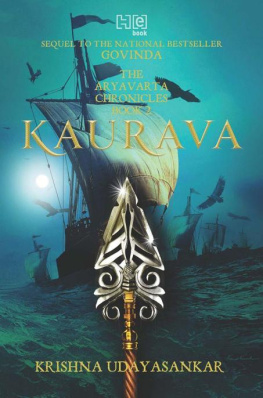

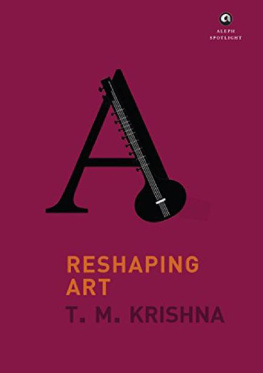
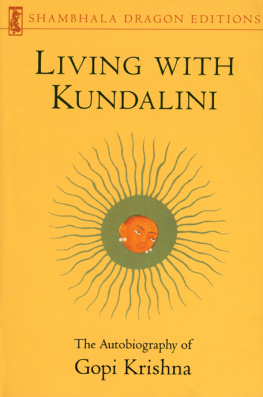
![Krishna Dharma - Mahabharata: [the greatest spiritual epic of all time]](/uploads/posts/book/213378/thumbs/krishna-dharma-mahabharata-the-greatest.jpg)
